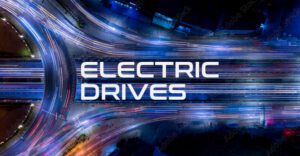Amazon has announced it is launching five electric heavy goods vehicles (HGVs) in its delivery fleet for the first time in the UK. The 37-tonne AF CF Electric HGV electric vehicles (EVs) are now operating from Amazon’s fulfilment centres in Tilbury and Milton Keynes, transporting customer packages with zero tailpipe emissions and using battery power.
These vehicles replace diesel HGVs, resulting in up to 100,000 annual road miles fuelled with renewable electricity instead of diesel, preventing 170 tonnes of CO2e from being emitted. They are the first of nine electric HGVs expected by the end of 2022, joining more than 1,000 electric delivery vans currently on the road in the UK.

Amazon’s first electric HGVs in the UK and Europe mark an important milestone towards the electrification of its fleet, forming part of Shipment Zero. This is Amazon’s goal to deliver 50 percent of shipments with net-zero carbon by 2030.
Currently, heavy goods vehicles make up around 16 percent of the UK’s domestic transport emissions. Using the latest innovations in battery technology, Amazon’s electric trucks will soon be using first-of-their-kind fast 360 kW electric charging points at Amazon’s Tilbury and Milton Keynes sites.
John Boumphrey, Amazon UK country manager, said: “Amazon is one of the first companies in the world to put electric heavy goods trucks on the road.
“We’re committed to becoming net-zero carbon by 2040, and this is a milestone as we continue to decarbonise our transportation network so we can deliver more customer orders using zero emissions vehicles.”
Eelco van Veen, DAF Trucks Director Fleet Sales: “We are excited to bring the DAF CF Electric HGV into Amazon’s fleet and support their commitment towards The Climate Pledge. The DAF CF Electric truck represents an important step in the industry towards zero emission middle mile distribution.”
Lord Grimstone, Investment Minister, said: “This is further proof that the UK’s logistics sector continues to be at the forefront of efforts to electrify fleets and transition to zero emissions vehicles.
“Amazon’s introduction of its first-ever fully electric heavy goods vehicles in their UK fleet is fantastic news not only for their customers but for our wider efforts to end our contribution to climate change and transition to cleaner modes of transport.”
Trudy Harrison, Parliamentary Under Secretary of State at the Department for Transport (DfT), said: “It is fantastic to see Amazon and the fleet industry playing its part in the UK’s world-leading plans to clean up our air, boost green jobs and decarbonise our vital transport network.
“Amazon plays a key role in transporting goods to towns and villages up and down the country and I’m pleased to see they are leading the way by going green. With the zero emission market now taking off for even the heaviest HGVs, we’ll be able to move more products around in a way that’s friendlier to our environment while supporting our net zero mission.”

Hopefully, Amazon will continue to expand its fleet of electric heavy goods vehicles, especially with increased demand for deliveries since the pandemic first hit. We also hope that this will crossover to other delivery and logistics firms in the UK to help reduce carbon emissions for a more sustainable future.
This builds on Amazon’s announcement at the start of the year that it will be working with Stellantis, who are a global mobility player made up of 14 motor brands including Vauxhall, Peugeot, Fiat, Citroën, Dodge and Jeep, to accelerate its shift to becoming a sustainable mobility tech company.
Since Amazon launched The Climate Pledge in 2019, the company has also continued to invest heavily in renewable energy. The company is the largest corporate buyer of renewable energy in Europe, with 3.5GW of renewable energy projects in Europe and 12GW globally.
Amazon is on a path to powering its operations with 100 percent renewable energy by 2025, five years ahead of the original target of 2030.




